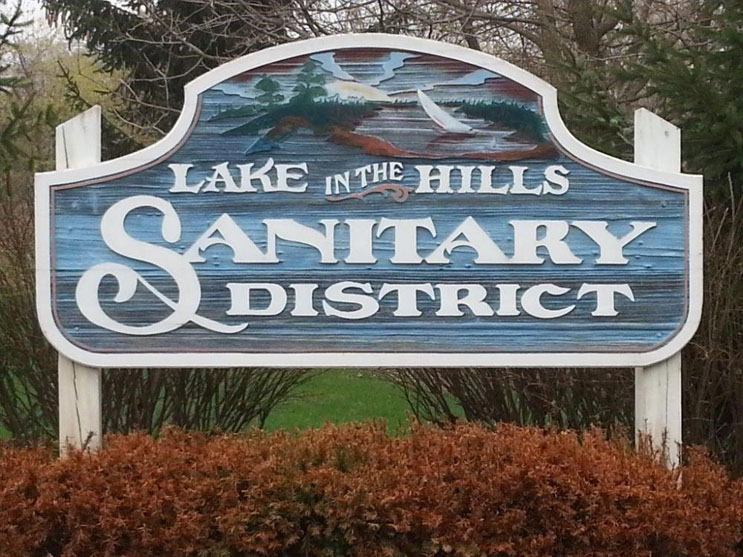3 Public Works Professionals Tap Technology To Address Infrastructure Challenges
By Mary Conley Eggert
The digital revolution has reached our utilities, but not everyone is taking advantage of how it can, for example, make water and wastewater cleaner, healthier, and more efficient. National news media seemingly report daily on U.S. infrastructure, but they rarely get down in the trenches with the public works professionals who are accomplishing so much. Three of them, who are using the Internet of Things (IoT) to better manage critical assets, tell their stories here.
Dennis Lambert, the Collections Crew Supervisor at Rodeo Sanitary District, is on the California Water Environment Association (CWEA) Collections Committee for San Francisco, and is a recipient of the CWEA Golden Manhole award. Challenged to monitor a trouble spot in his sewer system that was adjacent to a stream and could lead to Level 1 violations, Dennis asked for ideas. A peer at the Union Sanitary District recommended SmartCover Systems™, as his district had just started using the monitoring technology.
The Rodeo Sanitary District (RSD) is an enterprise district, formed in 1939, that serves the town of Rodeo and the village of Tormey, about 8,000 residents, and businesses in Western Contra Costa County. The treatment plant in Rodeo collects and treats an average dry weather flow 550,000 gallons of wastewater per day.
RSD’s No.1 goal was zero sewer overflows, and SmartCover Systems was a ‘canary in the coal mine for us,’ said Lambert. “It helped us see the need to do a sewer redirect to avoid an overspill two years ago.”
The system provides advance notification as water levels rise, and can be set to send alerts when it hits levels determined by the utility to signal a problem.
Lambert awakened a few weeks back to log into the dashboard following a pump replacement. I was confident of our alert system but curious to know how the upgrade impacted the sewer system, and it was great to see the data. “SmartCover has been a backup to a backup in a very difficult upgrade.”
Marcos Torres, Public Works Supervisor in Shafter, CA, decided to tap SmartCover Systems’ data analytics platform after hearing about it from a colleague. “We have old infrastructure, and SmartCover provides a smart, simple, out-of-the-box solution for water level monitoring,” said Torres.
The City of Shafter owns, operates, and maintains the domestic water system within the city, located about 18 miles from Bakersfield. The water system presently consists of seven water wells, approximately 70 miles of distribution lines, and five water-storage tanks equipped with booster pumps. Monthly service fees are established to provide the city necessary funding to cover current operational expenditures, the replacement of existing equipment, and required additions to capacity. The city also delivers domestic water service to several areas outside the core city area. Private water systems in those areas requested Shafter water because of problems with their own wells.
“We need to make the most of our staff’s time, and SmartCover provides consistent reports and real-time alerts that enable us to focus our team’s time elsewhere,” Torres said.
Rick Forner, District Manager, Lake in the Hills, IL, learned about SmartCover Systems sewer monitoring technology in a magazine and thought its water-level monitoring could give his team advance notice on trouble-spots before they create problems for local residents.
The Lake in the Hills Sanitary District is a 4.5 MGD wastewater treatment facility servicing the village of Lake in the Hills and portions of the City of Crystal Lake and Village of Huntley, IL. Forner’s team oversees 125 miles of large-diameter sanitary trunk sewers and collection system mains, maintaining six pumping stations that transport wastewater to the treatment facility

The utility purchased two SmartCover Systems monitors for a lift station and an area where they’ve often seen grease back up into a residential area. “We want to avoid surprises,” said Forner. “We had one location where a house was impacted three times.”
SmartCover Systems shows where water levels are rising, typically due to grease build-ups or pump malfunctions, so public works professionals can address the source of the water-level rise and prevent the cost and inconvenience of a spill.
Relying on the alerts that SmartCover provides, Forner and his team can fix problems before they impact residents. We secure insurance as a backup — as damages from overflows can run between $10,000 and $15,000 per incident. The reality is that spills create a tremendous burden on local residents, so the goal is the complete elimination of overflows.” Forner happily adds: “We haven’t had any issues since they installed the systems.”
SmartCover Systems provides monitoring solutions for water and wastewater applications. Its water IoT solutions are achieved with remote sensor systems continuously measuring, acquiring, and communicating data via advanced satellite communications. As a result, customers have 24/7 access to data and advanced analytics via the cloud through a unique user interface. More information is available at www.smartcoversystems.com.
Mary Conley Eggert is Chief Innovation Officer at GlobalWaterWorks, a 501c6 and marketing consultancy committed to advancing business adoption of smart water technologies to ensure the availability of clean, fresh water for future generations.
